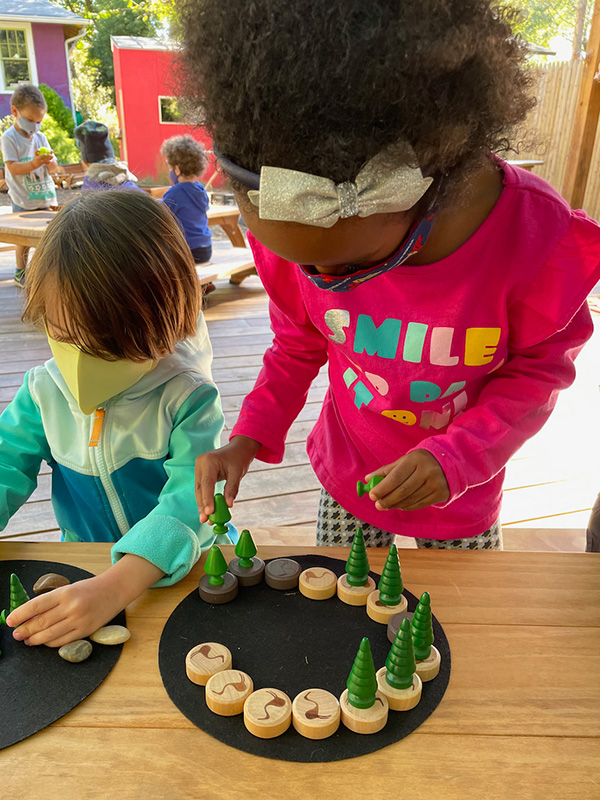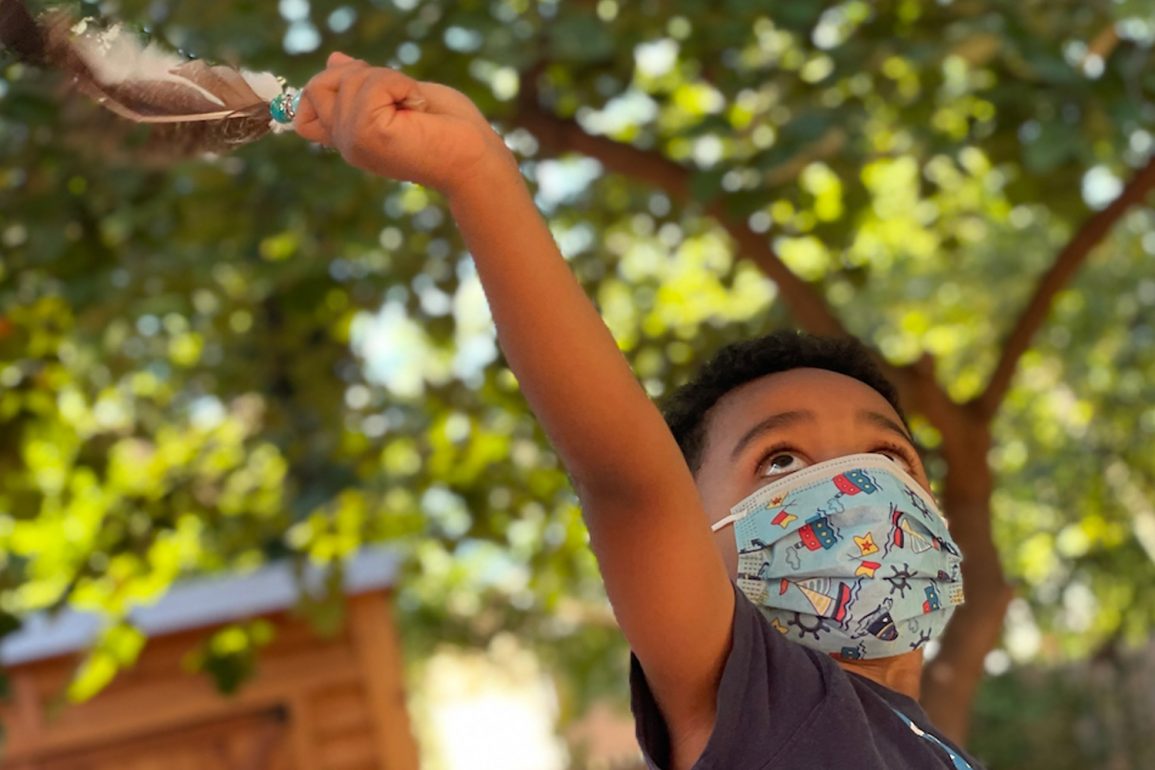Takoma Park, Md., population 17,672, is often gently lampooned by the Washington Post for its progressive politics and community activism. This D.C. suburb also happens to be where my family and I have lived for the past 11 years. We did not belong to the Takoma Park Cooperative Nursery School (TPCNS)—widely known as the Purple School—when my children were younger, but I have been aware of it for a while and have neighbors who participate. I recently visited the plum-colored house on Flower Avenue for the first time, to learn more about its model and how cooperatives might play a bigger role in our country’s evolving child care landscape. As post-pandemic work schedules seem to promise more flexibility, the cooperative model could suit more working families, with more types of jobs.
“Parents, or children’s adults, own and operate this school only while the children are enrolled,” explained Lesley Romanoff, director and lead teacher. “The roster of employer-owners is ever-changing, so we need immediate engagement every year to bring everyone up to speed.” Ownership is the key word, which implies collective responsibility rather than hiring, payroll and things like employee evaluations. Romanoff is the sole full-time TPCNS employee.
👉 Read more in Romanoff’s essay “Co-oping Is Not the Same As Volunteering”
Architect and TPCNS mom Wakako Tokunaga, who praises Romanoff as both a leader in the co-op movement and a gifted teacher, describes the Purple School as “an extension of home.” She and her husband have three children, and she acknowledges that being a member is a serious commitment. “We had to make a lot of changes to our schedules to make it work. As members, we had to show up ourselves. You can’t buy your way out. You can’t send a granny or a nanny in your place.” In addition to providing care and attending workshops and meetings, Tokunaga designed an elegant teahouse on the grounds.
In a time when community connections are fraying and grandparents have become “gradually dissociated from the labor of child care” (in the words of a recent Washington Post essay), TPCNS weaves families together into a supportive network that goes beyond child care. Shared responsibilities lay the groundwork for close bonds that last into—and beyond—the school years. Tokunaga says her family still goes camping with other TPCNS families, even though their children are older now. “The other parents love my kids, and I love theirs.”

TPCNS combines the strengths of 45 families with children between two and five years old. Romanoff says the ideal number of children would be around 80. “It’s totally about working,” she insists. “This is not mainly for stay-at-home moms.” In most TPCNS families, the children’s adults (usually this means the sole parent or both parents) work. Three or four trained adults also care for the children. Adults in the community also serve on the board, provide materials or maintain the grounds.
The teahouse and other outdoor structures have played an important part in reinforcing TPCNS’s Covid-appropriate commitment to outdoor learning. During the pandemic, Romanoff says, “We all suffered. We suffered together even when we weren’t together.” One cooperative in Annapolis closed its doors. Most of the others are rebuilding.
TPCNS belongs to Parent Cooperative Preschools International (Romanoff is a past president), which offers resources and publications to support the formation and administration of cooperatives. Romanoff mentors a fledgling co-op in New Jersey, helping it assemble by-laws—which sounds like a purely administrative process, but she insists that the document is what holds these communities together. Rules not only preserve order but also communicate shared values.
A recent case study written for Capita by Nancy Vorsanger describes Childspace in Philadelphia, a variation on the cooperative model built on worker ownership rather than parent ownership. (Currently, 12 of the 45 employees are owners, which entails unpaid responsibilities.) Childspace, which serves 85 children in two locations, has a dual nonprofit-corporate structure, allowing it to receive funding targeted to businesses as well as foundation grants.
👉 Read more: Pioneering Cooperative Fosters Women, Workers and a Powerful Possibility for Child Care
Childspace dates back to 1988. The cooperative model embodied by TPCNS—where the parents are the caregivers—traces its roots back to the Hyde Park neighborhood of Chicago in 1916, with other another version arising in Berkeley in 1927. Author Tillie Olsen helped to launch one in San Francisco in the 1940s, the same decade that TPCNS started.
In 2021, Romanoff says, “Our movement is more important than ever. We’re a vehicle for community participation.”

Mark Swartz
Mark Swartz writes about efforts to improve early care and education as well as developments in the U.S. care economy. He lives in Maryland.



